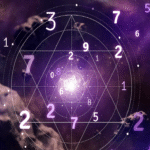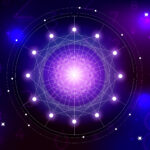Executive Summary
This analysis examines the cornerstone of the Vedic birth chart: the Lagna, or Ascendant/Rising Sign. We explore the Lagna Meaning (equivalent to Rising Sign Meaning in Western terms but with unique Vedic significance) through traditional, contemporary, student, and practical Jyotish perspectives. Calculated using the Sidereal Zodiac, the Lagna represents the self, physical body, overall life direction, and the foundational point for house division. Understanding the Lagna Rashi and the condition of its ruling planet, the Lagnesha (Chart Ruler equivalent), is paramount in Ascendant Astrology (Jyotish context).
LENS 1: Traditional Foundation (The Traditional Jyotishi’s View)
Key Findings: In classical Jyotish, the Lagna is the most critical point in the Kundali. It is the Rashi (Sidereal sign) rising on the eastern horizon at the precise moment of birth, marking the commencement of the 1st Bhava (House). It signifies the native’s physical body (tanu), innate nature (prakriti), overall health, status, and the general trajectory of life. The strength and placement of the Lagnesha (Lord of the Lagna) are of utmost importance for the entire chart’s potential.
Detailed Analysis:
Traditional Jyotish meticulously assesses the Lagna: the Rashi itself, planets situated within the 1st Bhava (influencing personality and physique directly), aspects (Drishti) received by the Lagna and the Lagnesha, and the dignity/strength of the Lagnesha. A strong Lagna and Lagnesha (e.g., Lagnesha exalted or in own sign, located in a Kendra/Trikona house) promise vitality, strong character, success, and resilience. Conversely, afflictions indicate potential struggles related to self, health, or life direction. The Lagna sets the entire framework for Bhava interpretation.
- Technique Deep Dive: Lagnesha Placement: The Bhava occupied by the Lagnesha is critically important. Lagnesha in the 10th Bhava connects life purpose strongly to career; in the 7th, to partnership; in the 9th, to dharma and fortune; in a Dusthana house (6, 8, 12), it can indicate struggles or service orientation related to the self.
- Expert Insight (Traditional Source): “The Lagna is the root of the tree of life represented by the nativity. If the root is strong, the tree flourishes; if weak, it struggles.” – Paraphrased principle from classical Jyotish texts.
- Hidden Wisdom: Vargottama Lagna: If the Lagna Rashi is the same in the main chart (Rasi/D1) and the important Navamsa (D9) chart, it’s called Vargottama. This significantly strengthens the Lagna, bestowing resilience, stability, and prominence.
- Astrological Framework Map Suggestion: Diagram showing the Eastern horizon, the rising Rashi designated as Lagna (1st Bhava), and the subsequent numbering of Bhavas (often counter-clockwise in North Indian charts, clockwise in South Indian). Highlight the Lagnesha.
- Critical Considerations: While the Lagna Rashi gives clues to physical appearance, these are broad tendencies influenced heavily by genetics and should not be taken rigidly. The focus is more on vitality and innate constitution.

LENS 2: Contemporary Interpretation Framework (The Modern Jyotishi’s Approach)
Key Findings: Contemporary Jyotish maintains the Lagna’s centrality but often interprets its influence through a lens that includes psychological orientation and self-awareness. It’s seen as the filter through which we perceive and engage with the world, our primary point of interaction, and the expression of our individuality in this lifetime. The focus remains strongly on the Lagnesha as the guiding force.
Detailed Analysis:
Modern Jyotishis explain the Lagna Rashi as coloring our initial approach to life, our spontaneous reactions, and our “persona,” similar to the Western concept of the Astrological Mask, but deeply tied to our physical embodiment and karmic starting point. It influences how we initiate actions and the nature of our self-image. The Lagna Meaning is explored in terms of how our innate nature (based on Lagna Rashi/Nakshatra/Lagnesha) interacts with life experiences. Ascendant Astrology in Jyotish is fundamentally about the integrated self.
- Technique Deep Dive: Lagna Nakshatra: Analyzing the specific Nakshatra within the Lagna Rashi adds significant depth to understanding the native’s core characteristics, motivations, and even health predispositions, beyond the Rashi description alone.
- Expert Insight (Modern Jyotishi): “The Lagna is the ‘window’ through which your soul views and interacts with the world in this incarnation. The Lagnesha is the ‘driver’ steering your vehicle (the body/life) based on that perspective.” – Contemporary Jyotish Practitioner.
- Alternative Approaches: Some integrate Lagna analysis with Ayurvedic principles to understand the individual’s constitution (Prakriti) based on the elemental nature of the Lagna Rashi and influences upon it.
- Astrological Framework Map Suggestion: A visual showing the Lagna as a lens or filter, with the Lagnesha depicted as a guiding force directing energy towards its own Bhava placement. Connect Lagna to physical body and self-concept.
- Critical Considerations: While psychological interpretations are useful, reducing the Lagna solely to a “mask” undermines its profound significance in Jyotish as the indicator of physical vitality, overall life potential, and the very foundation of the chart structure.

LENS 3: Learning Path Analysis (The Student’s Journey)
Key Findings: For students, understanding the Lagna’s paramount importance in Jyotish is crucial, distinguishing it from the Western focus often placed on the Sun sign. Learning to identify the Lagna Rashi, its Lagnesha, and assessing the Lagnesha’s strength and placement are fundamental interpretive steps. Grasping the concept requires an accurate birth time.
Detailed Analysis:
Students learn that the Lagna sets the entire house sequence. They memorize the ruling planets (Lagneshas) for each Rashi. Calculating the Lagna degree precisely (requiring accurate birth time and location) is emphasized. Understanding the difference between Lagna Rashi influence and Chandra Rashi (Moon sign) influence is key – Lagna relates more to the outer self, body, and life path initiation, while Chandra relates to the inner mind and emotions. Ascendant Astrology basics in Jyotish start here.
- Real-World Application: Observing one’s own innate tendencies, physical constitution, and general approach to life through the lens of the Lagna Rashi and Lagnesha placement. Analyzing charts of known individuals helps solidify understanding.
- Student Question: “My Lagna Lord (Lagnesha) is debilitated (Neecha). Does that mean my life is doomed?” Answer: No. A debilitated Lagnesha indicates inherent challenges related to self-confidence, health, or finding direction, suggesting these areas require conscious effort and perhaps remedial measures (Upayas). Look for cancellations (Neecha Bhanga) and other strengthening factors. It signifies a karmic lesson, not a fixed negative outcome.
- Expert Insight (Jyotish Student): “Figuring out my Lagna and Lagnesha placement was like finding the steering wheel of my chart! It showed me why I focus so much energy on the area of life where my Lagnesha sits.”
- Common Misconceptions vs. Reality: Misconception: Lagna is just the ‘first impression’ like in some Western views. Reality: In Jyotish, it’s far more foundational, representing the physical self, overall vitality, status, and the anchor point of the entire Kundali. Misconception: You only need the birth date for Vedic astrology. Reality: Accurate birth time is essential for calculating the correct Lagna, which is critical for house placements and overall chart interpretation.
LENS 4: Practical Implementation (The Practical Application Expert’s Guidance)
Key Findings: Practical Jyotish relies heavily on Lagna analysis for assessing overall strength, health, life direction, personality structure, and determining appropriate guidance. The Lagnesha’s condition is a primary diagnostic tool.
Detailed Analysis:
Consultants analyze the Lagna Rashi, planets in the Lagna Bhava, and the strength/placement of the Lagnesha to understand the client’s core constitution and life force. This informs advice on health, career paths that align with the native’s inherent nature, and strategies for navigating challenges indicated by afflictions. Remedies (Upayas) are often suggested based on strengthening the Lagna or Lagnesha if afflicted. Understanding the Lagna Meaning is step one in any practical chart reading.
- Real-World Application: Choosing activities or environments that support the Lagna Rashi’s nature (e.g., physical activity for Aries Lagna, intellectual pursuits for Gemini Lagna). Strengthening the Lagnesha through appropriate Upayas (mantras, gemstones if carefully prescribed). Understanding health vulnerabilities based on Lagna influences.
- Technique Deep Dive: Relationship between Lagna and Chandra Lagna: Experienced Jyotishis often read the chart from both the Lagna and the Chandra Lagna (treating the Moon’s sign as the first house) to get a comprehensive view of the native’s external reality and internal perception.
- Expert Insight (Jyotish Consultant): “Assessing the Lagna and Lagnesha is my first step. It tells me about the person’s core vitality and the direction their life force naturally wants to flow. Everything else in the chart operates relative to this foundation.”
- Practical Tip: Note the condition of your Lagnesha (its sign, house, aspects, dignity). Consciously working on the affairs of the house it occupies often strengthens your sense of self and overall well-being.
- Chart Example Suggestion: A sample Kundali highlighting a strong Lagna/Lagnesha (e.g., Lagnesha exalted in a Trikona) versus a challenged one, with annotations explaining the potential difference in life experience and vitality.
PERSPECTIVE INTEGRATION MATRIX
|
Feature |
Traditional View |
Contemporary View |
Student Focus |
Practical Use |
Integration Point |
|
Primary Role |
Body, Self, Life Foundation |
Interface, Embodiment, Perception |
Identifying Lagna/Lagnesha |
Assess Vitality, Give Direction |
Understanding embodiment (contemp) links physical body (trad) to practical health advice. |
|
Significance |
Sets Chart Structure, Status |
Filter of Reality, Self-Image |
Accurate Birth Time Need |
Gauge Strength, Guide Choices |
Perception filter (contemp) influences how status/life path (trad) are experienced. |
|
Lagnesha |
Guiding Force, Key Indicator |
‘Driver’ of Self, Life Focus |
Assessing Strength/Placement |
Primary Diagnostic Tool |
Understanding Lagnesha’s focus (contemp/student) is key for diagnostics/guidance (practical). |
|
Focus |
Objective Constitution/Path |
Subjective Experience/Expression |
Foundational Calculation/Concept |
Health, Path, Remedies |
Awareness of innate nature (contemp/trad) allows for tailored practical advice (practical). |
MISCONCEPTION ANALYSIS
|
Common Belief |
Jyotish Reality |
|
Lagna Sign traits are absolute descriptions. |
They indicate tendencies of innate nature and physical constitution, heavily modified by planets in the Lagna, the Lagnesha, and aspects (Drishti). |
|
The Lagna changes throughout life. |
The natal Lagna is fixed by birth time. While its expression matures, the foundational Rashi and Lagnesha position remain constant reference points. |
|
Lagna is less important than Moon or Sun. |
In Jyotish, the Lagna is considered one of the absolute pillars of the chart, equally or arguably more important than Sun/Moon for overall structure. |
|
Any birth time approximation is okay. |
Even a few minutes’ difference can change the Lagna Rashi or its degree significantly, altering house placements and the entire chart analysis. Precision is key. |
KEY DEVELOPMENTS & FUTURE DIRECTIONS (Evolution Timeline)
- Vedic/Classical Period: Lagna established as the primary reference point (Udaya Lagna). Rules for Lagnesha, Bhava division based on Lagna, and assessment of its strength formalized in texts like Brihat Parashara Hora Shastra.
- Medieval Period: Continued refinement of interpretive principles related to Lagna, Lagnesha, and planets influencing the 1st Bhava.
- Modern Period: Integration with psychological concepts (self-image, persona), while maintaining core traditional importance. Increased emphasis on Nakshatra analysis within the Lagna.
- Contemporary: Focus on Lagna as indicator of Prakriti (innate constitution) potentially linking to Ayurveda. Continued exploration of Lagna/Lagnesha in Varga charts (divisional charts) for nuanced analysis. Availability of precise calculation software reinforces birth time importance.
- Future: Deeper integration of Lagna analysis with health and wellness paradigms (Ayurveda, etc.), more refined understanding of Lagna Nakshatras, continued exploration of the Lagnesha’s role in guiding dharma and karma.
SYNTHESIS & RECOMMENDATIONS (Celestial Integration)
The Lagna is the anchor of your existence in the physical world according to Jyotish. Integrating perspectives means understanding it as your foundational blueprint (Traditional), your interface with reality (Contemporary), a critical calculation requiring precision (Student), and a key diagnostic for life guidance (Practical). Honouring your Lagna involves understanding your innate nature and consciously directing your life force as guided by your Lagnesha.
Recommendations:
- Ensure Birth Time Accuracy: This is non-negotiable for correct Lagna calculation. Rectification may be needed if uncertain.
- Identify Your Lagna Rashi: Understand the core qualities of this Sidereal sign.
- Find Your Lagnesha: Determine the lord of your Lagna Rashi and locate its Bhava, Rashi, and aspects. This is crucial.
- Assess Lagna/Lagnesha Strength: Note any dignities (exaltation, own sign) or afflictions (debilitation, harsh aspects).
- Consider Planets in Lagna: Any Graha in the 1st Bhava strongly colours your personality and physique.
- Study Lagna Nakshatra: Delve into the specific lunar mansion rising for deeper insights.
FURTHER AREAS OF STUDY
- The Significance of Bhavas (Houses) in Jyotish (esp. 1st Bhava)
- Introduction to Grahas (Planets) in Vedic Astrology (esp. Lagnesha)
- Introduction to Nakshatras
- Understanding Planetary Strength (Shadbala) and Dignity
- Divisional Charts (Vargas) – especially Navamsa (D9)









